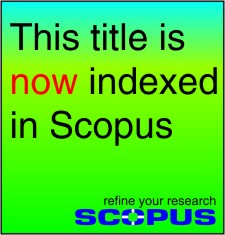The Association of Hypothyroidism and Periodontal Diseases in Tikrit City Patients
Takea Shaker Ahmed, Raghad Tahseen Thanoon, Jamal K. M
Periodontal disorders are inflammation caused by microbial-host interaction in tooth-supporting tissues. The most prevalent periodontal illnesses are gingivitis and periodontitis. Hypothyroidism means the thyroid gland produces too little thyroid hormones. The objective of this study was to assess and establish a relationship between the concentrations of thyroid stimulating hormones (TSH), thyroxin (T4), and triiodothyronine (T3) in the bloodstream and the clinical periodontal parameters (plaque index, gingival index, bleeding on probing, probing pocket depth, and clinical attachment level) in patients diagnosed with chronic periodontitis (CP) and participants with a healthy gum. The study encompassed a sample of 140 participants, with ages spanning from 20 to 45 years old. One group consisted of thirty five individuals who had both hypothyroidism and chronic periodontitis, another group consisted of thirty five individuals who had hypothyroidism but no chronic periodontitis, a third group included of thirty five individuals who had chronic periodontitis but no hypothyroidism, and the final group consisted of thirty five individuals with a clinically healthy periodontium. After conducting a clinical examination to assess periodontal health using measures such as ̋plaque index (PLI), gingival index (GI), bleeding on probing (BOP), probing pocket depth (PPD), and clinical attachment level (CAL)̋, blood samples were obtained from the participants. These samples were then analyzed using an automated blood analyzer to determine the concentrations of TSH, T4, and T3 hormones. Significant statistical differences were seen in PLI, GI, BOP score1, PPD, and CAL across the four groups: hypothyroidism with CP, hypothyroidism without CP, non-hypothyroidism with CP, and the control group. The group of individuals with hypothyroidism and chronic periodontitis exhibited the highest average TSH value (7.58), whereas the control group had the lowest value (0.9). The group without hypothyroidism but with chronic periodontitis exhibited the highest average T4 value of 70.18, whereas the group with hypothyroidism but without chronic periodontitis had the lowest average value of 33.31.The average T3 level in individuals with hypothyroidism and chronic periodontitis was 2.33, whereas in the control group, it was 1.28. A moderate inverse correlation was seen between TSH, T4, and T3 levels and clinical periodontal markers. Hypothyroidism affects oral and periodontal health, destroying the periodontium and causing periodontitis. It must be detected early to prevent disease development and oral tissue damage. If thyroid dysfunction is discovered, therapy must be adjusted to avoid consequences .
Keywords: Periodontal diseases, Hypothyroidism



